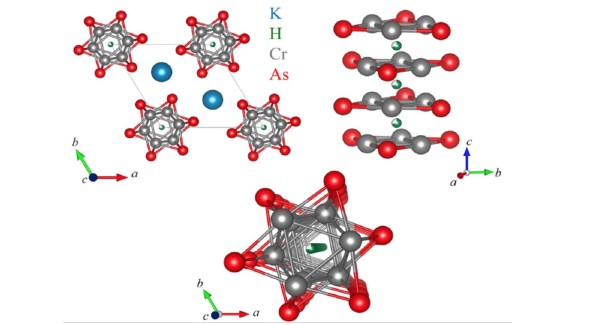Hydrogen Doping Controls Superconductivity

Scientific Achievement
It is shown that H intercalated into 1D KCr3As3 to produce KHxCr3As3 acts as an electronic dopant allowing the tuning of the ground state from spin-glass to superconducting phases.
Significance and Impact
This discovery resolves ongoing puzzles about the nature of the phases in the KxCr3As3 family of unconventional superconductors and shows how the phase diagram as a function of doping can be properly explored, enabling a meaningful comparison with other systems.
Research Details
- Neutron diffraction showed the presence and location of H in KCr3As3 that was previously missed by x-ray based probes.
- The diffraction data combined with Density Functional Theory showed that the H acts as an electron donor in the system.
“Tuning from frustrated magnetism to superconductivity in quasi-one-dimensional KCr3As3 through hydrogen doping”
K.M. Taddei, L.D. Sanjeewa, B. Lei, Y. Fu, Q. Zheng, D. Singh, A. Sefat, and C. Dela Cruz,
Physical Review B, 100, 220503(R) (2019). DOI: https://doi.org/10.1103/PhysRevB.100.220503




